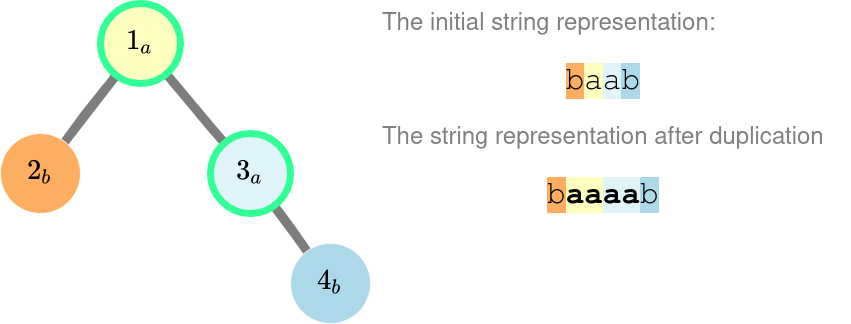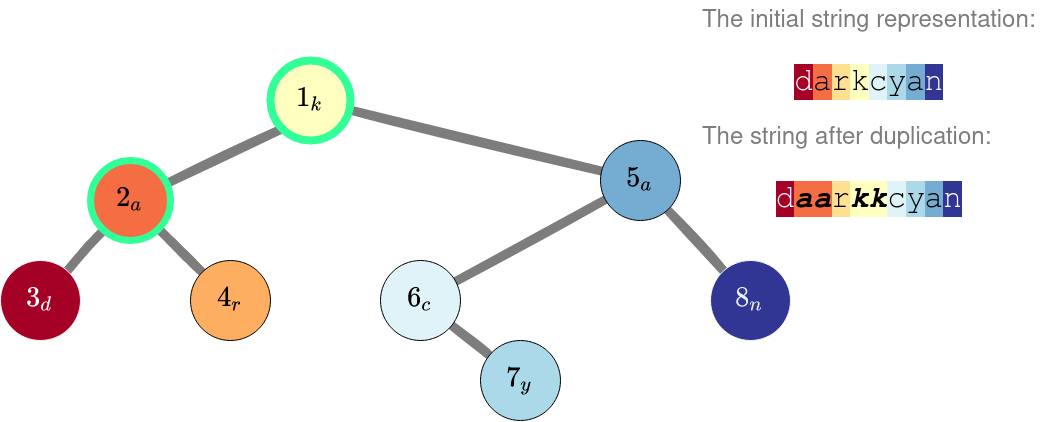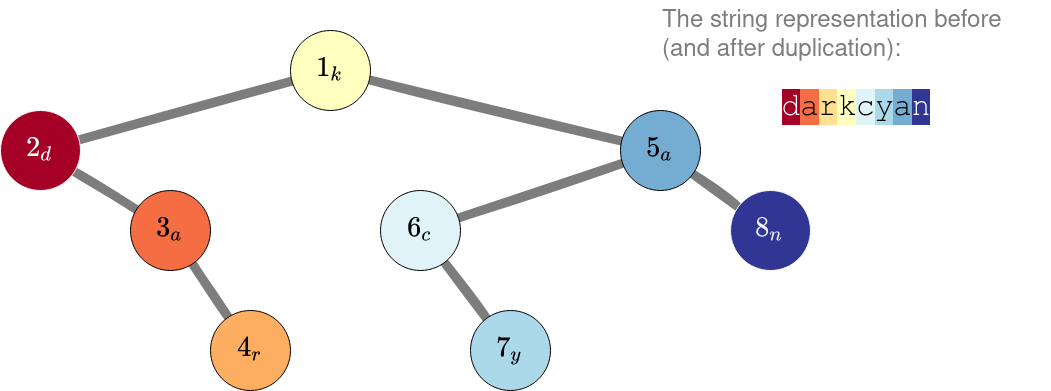CF1623E.Middle Duplication
普及/提高-
通过率:0%
AC君温馨提醒
该题目为【codeforces】题库的题目,您提交的代码将被提交至codeforces进行远程评测,并由ACGO抓取测评结果后进行展示。由于远程测评的测评机由其他平台提供,我们无法保证该服务的稳定性,若提交后无反应,请等待一段时间后再进行重试。
题目描述
A binary tree of n nodes is given. Nodes of the tree are numbered from 1 to n and the root is the node 1 . Each node can have no child, only one left child, only one right child, or both children. For convenience, let's denote lu and ru as the left and the right child of the node u respectively, lu=0 if u does not have the left child, and ru=0 if the node u does not have the right child.
Each node has a string label, initially is a single character cu . Let's define the string representation of the binary tree as the concatenation of the labels of the nodes in the in-order. Formally, let f(u) be the string representation of the tree rooted at the node u . f(u) is defined as follows: $$$$ f(u) = \begin{cases} \texttt{
This way, the string representation of the tree is f(1) .
For each node, we can duplicate its label at most once, that is, assign c_u with c_u+c_u , but only if u is the root of the tree, or if its parent also has its label duplicated.
You are given the tree and an integer k . What is the lexicographically smallest string representation of the tree, if we can duplicate labels of at most k nodes?
A string a is lexicographically smaller than a string b if and only if one of the following holds:
- a is a prefix of b , but aneb ;
- in the first position where a and b differ, the string a has a letter that appears earlier in the alphabet than the corresponding letter in b$$.
输入格式
The first line contains two integers n and k ( 1≤k≤n≤2⋅105 ).
The second line contains a string c of n lower-case English letters, where ci is the initial label of the node i for 1≤i≤n . Note that the given string c is not the initial string representation of the tree.
The i -th of the next n lines contains two integers li and ri ( 0≤li,ri≤n ). If the node i does not have the left child, li=0 , and if the node i does not have the right child, ri=0 .
It is guaranteed that the given input forms a binary tree, rooted at 1 .
输出格式
Print a single line, containing the lexicographically smallest string representation of the tree if at most k nodes have their labels duplicated.
输入输出样例
输入#1
4 3 abab 2 3 0 0 0 4 0 0
输出#1
baaaab
输入#2
8 2 kadracyn 2 5 3 4 0 0 0 0 6 8 0 7 0 0 0 0
输出#2
daarkkcyan
输入#3
8 3 kdaracyn 2 5 0 3 0 4 0 0 6 8 0 7 0 0 0 0
输出#3
darkcyan
说明/提示
The images below present the tree for the examples. The number in each node is the node number, while the subscripted letter is its label. To the right is the string representation of the tree, with each letter having the same color as the corresponding node.
Here is the tree for the first example. Here we duplicated the labels of nodes 1 and 3 . We should not duplicate the label of node 2 because it would give us the string "bbaaab", which is lexicographically greater than "baaaab".
 In the second example, we can duplicate the labels of nodes 1 and 2 . Note that only duplicating the label of the root will produce a worse result than the initial string.
In the second example, we can duplicate the labels of nodes 1 and 2 . Note that only duplicating the label of the root will produce a worse result than the initial string.
 In the third example, we should not duplicate any character at all. Even though we would want to duplicate the label of the node 3 , by duplicating it we must also duplicate the label of the node 2 , which produces a worse result.
In the third example, we should not duplicate any character at all. Even though we would want to duplicate the label of the node 3 , by duplicating it we must also duplicate the label of the node 2 , which produces a worse result.
 There is no way to produce string "darkkcyan" from a tree with the initial string representation "darkcyan" :(.
There is no way to produce string "darkkcyan" from a tree with the initial string representation "darkcyan" :(.